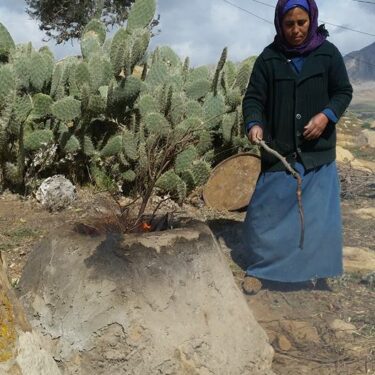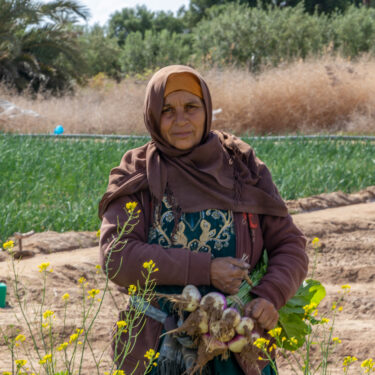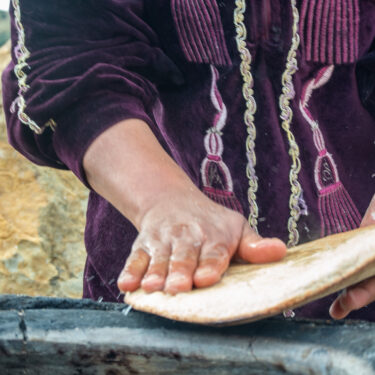Call for Contributions for the Documentary “Women's Lives”
We are launching a call for contributions for the production of a feature-length documentary that will highlight the many and essential roles of women in the agricultural and rural sectors. Whether as owners, tenants, workers, fisherwomen, or cooks, these women play a central role in agricultural, food, social, economic, and ecological chains.
The aim of this documentary is to promote and recognize the importance of women throughout the food chain and in agriculture in general.
My commitment to documentary filmmaking is an uncompromising political conviction. I defend my freedom of expression in order to create films to support the causes I believe in. My intention is not to seek personal fame, career or prestige, but to give a voice to those who need it. Solidarity financing is the only way to achieve this freedom of commitment and struggle.
That is why I am asking for your support, whether financial, active (creations, work, useful contacts, etc.) or political. Even a simple smile can make a big difference.
The thousands of women in the agricultural world, who work tirelessly and ask for nothing in return, deserve to be seen and heard. They need our support.
I assure you of my eternal gratitude and my commitment not to betray this trust.
If you are outside Tunisia
By bank transfer:
Account holder: Habib Ayeb
IBAN: BE95 9053 6051 5358
Swift/BIC: TRWIBEB1XXX
Bank name and address:
Wise
Rue du Trône 100, 3rd floor
Brussels - 1050
Belgium
If you are in Tunisia
By bank transfer:
Account holder: Habib Ayeb
IBAN: TN59 12 002 00 00033030988
Swift/BIC: UIBKTNTT
Bank name and address: UIB

Women's Lives
Director: Habib Ayeb
Production: Layoun Prod
Feature-length documentary about the specific roles and diverse functions of peasant and rural women (landowners, tenants, workers, fisherwomen, cooks, nurturers) in the agricultural, food, social, economic and ecological labour and activities.
Just a few years before her death at just under 90, my mother never missed the olive-picking season. While much younger people limited themselves to the branches within easy reach, my mother was the first to go in search of the highest branches... And from the top she commanded the whole troop and scolded the children when they stepped on the fallen olives...
The aim of this documentary is to highlight the central role played by women throughout the food chain and in the agricultural sector in general.



The advantage of focusing on the agricultural sector, and especially its food component, is that the activities of rural women are much more visible and singular than those of men. If you ask a farmer the species or variety of a particular seed or plant, there's a very high probability that he'll turn to his wife for confirmation. And it's not uncommon for him to be corrected. In fact, what many people are unaware of is that agricultural and food knowledge in rural areas is first and foremost women's knowledge. There's no shortage of proof of this, and it's not difficult for the uninitiated to spot.
Prior to the most recent changes in the division of agricultural labor, which began in the early 1990s, women farmers carried out a significant share of the farm work in and around the home, alongside domestic and reproductive duties: feeding and caring for animals, maintaining their pens, selecting and saving seeds, growing a variety of vegetables and herbs for culinary use, and making fishing tools for women harvesting shellfish (laggata) or fish.
"People often tend to say that women are just in charge of preparing meals, which isn't quite true. In fact, we're in charge of preparing good and tasty food that gives everyone enjoyment. That's why we're in charge of the entire food chain, from the reproduction, selection and conservation of local seeds and varieties to the production of the products needed to make sufficient, tasty food that meets our needs and tastes. So we produce what we like to eat" (said a peasant woman we met in Egypt, during an investigation on the role of rural women in agriculture and food).
Since the early 1990s, we have witnessed a significant change in the division of labour in the peasant world, increasingly marked by the various processes and dynamics of dispossession and impoverishment. As peasant agriculture is less and less able to provide a sufficient income for the family, men are increasingly forced to seek additional income from urban activities (construction, informal trade, transport, etc.) outside their farms.
For their part, women farmers are taking on more and more farm work, often at ever greater distances from home. Hence the well-documented phenomenon of the "feminization" of agricultural work in most Southern countries. However, as women have always been actively involved in agricultural work, particularly in food production, we should be speaking more of an increased visibility of women farmers' work rather than of a supposed feminization, which would imply that women have been absent from this sector, which has never been the case. So it's less a matter of an improvement in the situation of women than of the need for them to work harder to ensure the family's food security.
On the island of Kerkennah (along the Tunisian coast, some twenty kilometers from the town of Sfax), fisherwomen catch fish, octopus and other species (by boat or sharfiyya) and/or clams. The fish caught is destined for family consumption and above all for the local market on the island and on the mainland. In the case of clams, the fisherwomen sell them to intermediaries for export. This activity is a source of substantial income, which explains why, despite numerous gender-related prejudices, the men of Kerkennah accept the presence of women in the fishing activity relatively well. More than 200 women are officially registered as fishermen.
In the broad steppes of the south, if women (waves, daughters, …) of the semi-nomadic herders (these are more shepherd-herders than nomads) don't follow the herds on their long journeys, which can sometimes last up to 3 or 4 days, at great distances from the set-up tent, they take care of almost everything else: looking after the family tent, feeding the animals in the evening, tending them if need be, milking sheep and goats, making lben (skimmed milk), butter or cheese, drying meat, picking and preserving medicinal plants... and, of course, preparing tasty meals for the family and for passing or unexpected "guests".
In the oases, they are everywhere on the plots, where they mainly take care of the seasonal crops and feed the few livestock (usually a number of animals, including the indispensable Eid sheep). In some cases, when the men are absent or unavailable, including due to illness, some oasis women take care of the irrigation of the plots, making arrangements with neighbours to avoid having to irrigate in the middle of the night.
In addition, special attention will be paid to the hundreds and thousands of women day laborers who get up very early in the morning to travel in small groups to a specific location (called almouqaf or station) where they wait for an intermediary in a van who will take a limited number of them to a farm that may be dozens of kilometers away. Both at elmouqaf and in the van, where they are often squeezed upright, these workers suffer various forms of violence: humiliation, rudeness, bargaining and harassment.
These are just a few examples of situations where women carry out essential agricultural activities, alone or with their husbands, in a subtle division of tasks that gives them real power while granting the man the privilege of visibility and appearance.
Filming Intentions
The aim is to produce portraits of women active in agriculture, fishing and food: 3 peasant women working in different agricultural environments, including at least one oasis woman; 2 fisherwomen and, if possible, a "semi-nomadic" woman. This requires an ethnographic approach, with participatory observation if possible. The aim is to produce realistic (cinéma du réel) and faithful portraits, so as to cross-reference them as closely as possible with the daily realities of these women as seen or perceived by themselves and their immediate entourage: family members, husbands, neighbors... The aim is to get as close as possible to these women and their entourage, but without any voyeurism or exoticism. The idea is not so much to show (the) women as to show their place, functions and social roles.
For information purposes only, here is a list of "socio-professional spheres" in which women play key roles that give them distinctive personal profiles:
- The women of Kerkena: fisherwomen and laggata-s who "collect clams".
- The women of Oued Sbaihyya in Zaghouan (association of women farmers)
- Oases and oasis women
- Shepherds' wives: grazing and semi-pastoralism
- Paid agricultural work: field and transport workers
We'll also be drawing on long memory, meeting elderly women with whom we'll be evoking their past as peasants, wives, mothers and ... women. This work on memory aims, among other things, to show the persistence of an unequal system and the various social changes, including the processes of dispossession and impoverishment, induced by the progressive marginalization of peasant agriculture in favour of agribusiness.
About the technical team:
To make this rather specific documentary, the technical team will be entirely comprised of professional Tunisian women. This includes shooting, sound recording, editing, color grading and mixing... as well as all the so-called secondary, but oh-so-essential, technical tasks.

